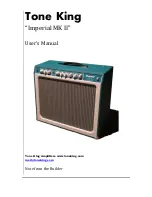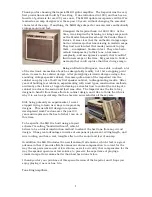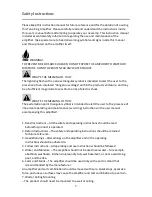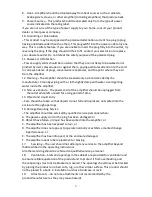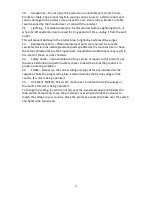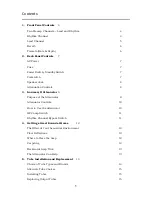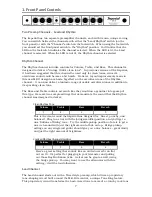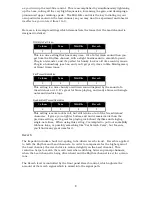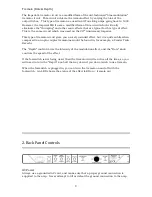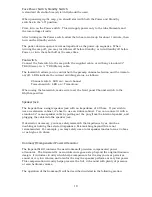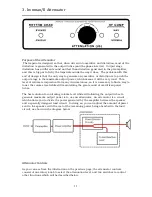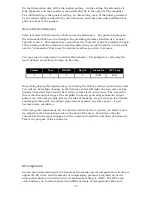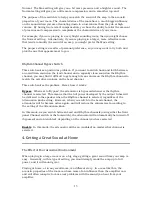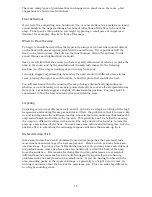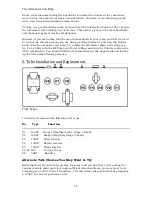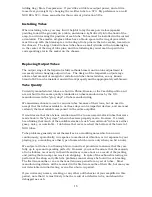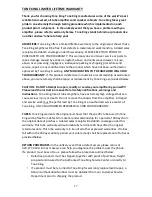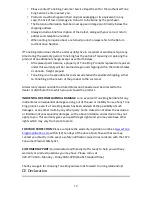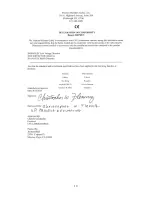
13
Normal. The Max setting will give you a bit more presence and a brighter sound. The
Normal setting will give you a little more compression, and a smoother top-end.
The purpose of this switch is to help you match the sound of the amp to the acoustic
properties of your room. The characteristics of the room have a much bigger influence
on the sound when you are attenuating down to a low volume than they do at high
volume. By having two levels of compensation, you have the ability to tailor the amount
of presence and compression to complement the characteristics of your room.
For example, if you are playing in a very bright sounding room, then you might choose
the Normal setting. Alternatively, if you are playing in a larger, more reflective room
that tends to muddy the sound of an amp, you might prefer the Max setting.
The proper setting is a matter of personal preference, so you may want to try both and
pick the one that appeals most to you.
Rhythm Channel Bypass Switch
This switch solves a particular problem: If you want to switch back and forth between
an overdriven sound on the lead channel and a squeaky clean sound on the Rhythm
channel, you may find it difficult to get enough clean volume on the Rhythm channel to
match the overdriven volume on the Lead channel.
This switch solves the problem. Here’s how it works:
Bypass
: When set to ‘Bypass’, the attenuator is bypassed whenever the rhythm
channel is selected. This means that the full power developed by the output tubes will
be delivered to the speaker when the Rhythm channel is selected, regardless of the
Attenuation knob setting. However, when you switch to the Lead channel, the
attenuator will be become active again, and will reduce the volume level according to
the setting of the Attenuation knob.
In this mode, as you switch between Lead and Rhythm channels (using either the front
panel Channel switch or the footswitch), the attenuator will automatically be turned off
(bypassed) and on (enabled), depending on the channel you have selected.
Enable
: In this mode, the attenuator will be on (enabled) no matter what channel is
selected.
4. Getting a Great Sound at Home
The Effect of Your Acoustical Environment
When playing in a large room or on a big stage, getting a great sound from your amp is
easy. Generally, in this type of setting, you would simply crank the amp up to full
power, and it will sound great.
Playing at home, or in any small room, is a different story. In a case like this, the
acoustic properties of the room can have more of an influence than the amplifier can,
and will often conspire to cause real problems with the sound you hear from your
amplifier.
Summary of Contents for Imperial MK II
Page 7: ...6 Tube Quality 16 6 Warranty 17 7 CE Declaration 18 ...
Page 20: ...19 ...

